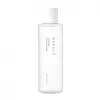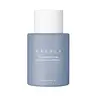What's inside
What's inside
 Key Ingredients
Key Ingredients

 Benefits
Benefits

 Concerns
Concerns

 Ingredients Side-by-side
Ingredients Side-by-side

Water
Skin ConditioningGlycerin
HumectantDipropylene Glycol
Humectant1,2-Hexanediol
Skin ConditioningCarbomer
Emulsion StabilisingBetaine
HumectantArtemisia Princeps Leaf Water
MaskingGlyceryl Glucoside
HumectantCentella Asiatica Extract
CleansingEthylhexylglycerin
Skin ConditioningTromethamine
BufferingCaprylyl Glycol
EmollientButylene Glycol
HumectantMelaleuca Alternifolia Leaf Extract
PerfumingPolyglyceryl-10 Myristate
Skin ConditioningPolyglyceryl-10 Laurate
Skin ConditioningMethylpropanediol
SolventGluconolactone
Skin ConditioningPropanediol
SolventSalicylic Acid
MaskingGlucose
HumectantRosmarinus Officinalis Leaf Oil
MaskingSodium Hyaluronate
HumectantWater, Glycerin, Dipropylene Glycol, 1,2-Hexanediol, Carbomer, Betaine, Artemisia Princeps Leaf Water, Glyceryl Glucoside, Centella Asiatica Extract, Ethylhexylglycerin, Tromethamine, Caprylyl Glycol, Butylene Glycol, Melaleuca Alternifolia Leaf Extract, Polyglyceryl-10 Myristate, Polyglyceryl-10 Laurate, Methylpropanediol, Gluconolactone, Propanediol, Salicylic Acid, Glucose, Rosmarinus Officinalis Leaf Oil, Sodium Hyaluronate
Water
Skin ConditioningGlycerin
HumectantDipropylene Glycol
HumectantPropanediol
Solvent1,2-Hexanediol
Skin ConditioningPanthenol
Skin ConditioningAmaranthus Caudatus Seed Extract
Skin ConditioningUlmus Davidiana Root Extract
Skin ConditioningCentella Asiatica Extract
CleansingFicus Carica Fruit Extract
HumectantHydrogenated Lecithin
EmulsifyingMacadamia Integrifolia Seed Oil
Skin ConditioningElaeis Guineensis Oil
EmollientPersea Gratissima Oil
Skin ConditioningAdansonia Digitata Seed Oil
EmollientDiphenyl Dimethicone
EmollientTriethylhexanoin
MaskingBetaine
HumectantPolyglyceryl-10 Myristate
Skin ConditioningButylene Glycol
HumectantAcrylates/C10-30 Alkyl Acrylate Crosspolymer
Emulsion StabilisingTromethamine
BufferingDipotassium Glycyrrhizate
HumectantCarbomer
Emulsion StabilisingGlyceryl Polymethacrylate
Disodium EDTA
Sodium Polyacrylate
AbsorbentPvm/Ma Copolymer
Emulsion StabilisingAllantoin
Skin ConditioningCeramide NP
Skin ConditioningTocopherol
AntioxidantGuaiazulene
AntimicrobialSqualane
EmollientCholesterol
EmollientStearic Acid
CleansingPhytosphingosine
Skin ConditioningHydroxyacetophenone
AntioxidantEthylhexylglycerin
Skin ConditioningWater, Glycerin, Dipropylene Glycol, Propanediol, 1,2-Hexanediol, Panthenol, Amaranthus Caudatus Seed Extract, Ulmus Davidiana Root Extract, Centella Asiatica Extract, Ficus Carica Fruit Extract, Hydrogenated Lecithin, Macadamia Integrifolia Seed Oil, Elaeis Guineensis Oil, Persea Gratissima Oil, Adansonia Digitata Seed Oil, Diphenyl Dimethicone, Triethylhexanoin, Betaine, Polyglyceryl-10 Myristate, Butylene Glycol, Acrylates/C10-30 Alkyl Acrylate Crosspolymer, Tromethamine, Dipotassium Glycyrrhizate, Carbomer, Glyceryl Polymethacrylate, Disodium EDTA, Sodium Polyacrylate, Pvm/Ma Copolymer, Allantoin, Ceramide NP, Tocopherol, Guaiazulene, Squalane, Cholesterol, Stearic Acid, Phytosphingosine, Hydroxyacetophenone, Ethylhexylglycerin
 Reviews
Reviews

Ingredients Explained
These ingredients are found in both products.
Ingredients higher up in an ingredient list are typically present in a larger amount.
1,2-Hexanediol is a synthetic liquid and another multi-functional powerhouse.
It is a:
- Humectant, drawing moisture into the skin
- Emollient, helping to soften skin
- Solvent, dispersing and stabilizing formulas
- Preservative booster, enhancing the antimicrobial activity of other preservatives
Betaine is a common humectant (a substance that promotes retention of moisture). It's known to be gentle on the skin and can help balance hydration.
This ingredient is best for improving hydration and soothing irritated skin. Studies also show it helps even out skin tone.
Fun fact: Betaine is naturally created in the skin and body. The kind found within cosmetic products can be either plant-derived or synthetic.
Another name for betaine is trimethylglycine.
Learn more about BetaineButylene Glycol (or BG) is used within cosmetic products for a few different reasons:
Overall, Butylene Glycol is a safe and well-rounded ingredient that works well with other ingredients.
Though this ingredient works well with most skin types, some people with sensitive skin may experience a reaction such as allergic rashes, closed comedones, or itchiness.
Learn more about Butylene GlycolCarbomer is a polymer of acrylic acid. Its main role is to create a gel consistency.
A high amount of carbomer can cause pilling or balling up of products. Don't worry, most products contain 1% or less of carbomer.
Centella Asiatica Extract (Centella) is derived from an herb native to Southeast Asia. It is famous for its anti-inflammatory and soothing properties.
Centella is rich in antioxidants and amino acids, such as Madecassic Acid and Asiaticoside.
Studies show the compounds in centella help with:
The combination of all these properties makes centella effective at soothing, hydrating, and protecting the skin.
Other great components of centella include Vitamin A, vitamin C, several B vitamins, and Asiatic Acid.
Fun fact: Centella has been used as a medicine and in food for many centuries. As a medicine, it is used to treat burns, scratches, and wounds.
Learn more about Centella Asiatica ExtractDipropylene Glycol is a synthetically created humectant, stabilizer, and solvent.
This ingredient helps:
Dipropylene glycol is technically an alcohol, but it belongs to the glycol family (often considered part of the ‘good’ alcohols). This means it is hydrating and gentle on skin unlike drying solvent alcohols like denatured alcohol.
As a masking agent, Dipropylene Glycol can be used to cover the smell of other ingredients. However, it does not have a scent.
Studies show Dipropylene Glycol is considered safe to use in skincare.
Learn more about Dipropylene GlycolEthylhexylglycerin (we can't pronounce this either) is commonly used as a preservative and skin softener. It is derived from glyceryl.
You might see Ethylhexylglycerin often paired with other preservatives such as phenoxyethanol. Ethylhexylglycerin has been found to increase the effectiveness of these other preservatives.
Glycerin is already naturally found in your skin. It helps moisturize and protect your skin.
A study from 2016 found glycerin to be more effective as a humectant than AHAs and hyaluronic acid.
As a humectant, it helps the skin stay hydrated by pulling moisture to your skin. The low molecular weight of glycerin allows it to pull moisture into the deeper layers of your skin.
Hydrated skin improves your skin barrier; Your skin barrier helps protect against irritants and bacteria.
Glycerin has also been found to have antimicrobial and antiviral properties. Due to these properties, glycerin is often used in wound and burn treatments.
In cosmetics, glycerin is usually derived from plants such as soybean or palm. However, it can also be sourced from animals, such as tallow or animal fat.
This ingredient is organic, colorless, odorless, and non-toxic.
Glycerin is the name for this ingredient in American English. British English uses Glycerol/Glycerine.
Learn more about GlycerinPolyglyceryl-10 Myristate isn't fungal acne safe.
Propanediol is an all-star ingredient. It softens, hydrates, and smooths the skin.
It’s often used to:
Propanediol is not likely to cause sensitivity and considered safe to use. It is derived from corn or petroleum with a clear color and no scent.
Learn more about PropanediolTromethamine helps balance the pH and improve the texture of a product. It is synthetically created.
As an emulsifier, Tromethamine prevents oil and water ingredients from separating. This helps stabilize the product and elongate a product's shelf life. Tromethamine also makes a product thicker.
Tromethamine helps balance the pH level of a product. Normal pH level of skin is slightly acidic (~4.75-5.5). The acidity of our skin is maintained by our glands and skin biome. Being slightly acidic allows our skin to create an "acid mantle". This acid mantle is a thin barrier that protects our skin from bacteria and contaminants.
Oral Tromethanmine is an anti-inflammatory drug but plays the role of masking, adding fragrance, and/or balancing pH in skincare.
1,3-Propanediol, 2-amino-2-(hydroxymethyl)-
Learn more about TromethamineWater. It's the most common cosmetic ingredient of all. You'll usually see it at the top of ingredient lists, meaning that it makes up the largest part of the product.
So why is it so popular? Water most often acts as a solvent - this means that it helps dissolve other ingredients into the formulation.
You'll also recognize water as that liquid we all need to stay alive. If you see this, drink a glass of water. Stay hydrated!
Learn more about Water